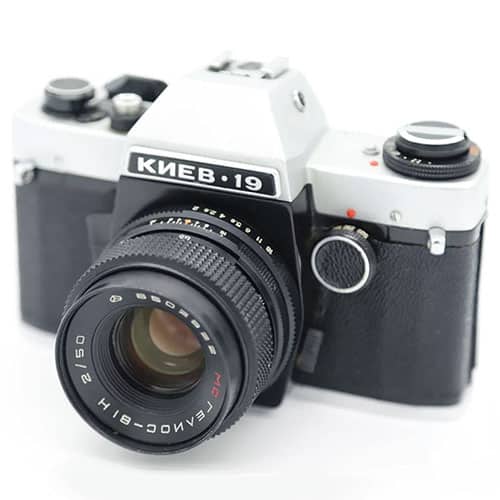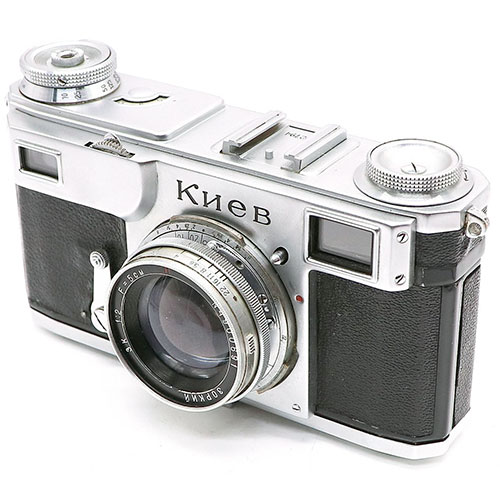Arsenal
The Arsenal factory is known among photographers for producing famous cameras called Kiev. This name was assigned to almost all cameras produced at this plant, whether it be medium format, SLR or rangefinder cameras.
It all started with the fact that after the World War II, documentation and equipment from the German Zeiss Ikon plant was transported to the USSR. Already in 1947, the production of the first Kiev cameras, which were actually Contact cameras with a redone logo, was started.
In fact, these were the highest quality cameras produced in the Soviet Union. These cameras had unsurpassed quality materials and workmanship. Their equipment was at the highest level, and the Zeiss Ikon lenses gave simply amazing image quality.
In the late 50s, the production of medium format cameras began at the Arsenal factory. And according to the good old Soviet tradition, it was a clone of a foreign camera, this time the Hasselblad camera. The camera was similar not only externally, but also in its features.
But the Arsenal plant copied not only the Contax and Hasselblad cameras but also the Pentacon Six camera, having created the Kiev-6C camera on its basis. It was also a medium format camera but with design and controls as in small format SLRs.
If we talk about 35mm SLR cameras, the Arsenal plant did not pass them by. Cameras such as Kiev 19 or Kiev 20 are excellent examples of the Soviet photographic industry. And of course, it could not do without copying. The 35mm Kiev SLR cameras were strongly inspired by Nikon cameras.
But, despite the fact that most of the cameras of the Arsenal plant were somehow clones of devices manufactured outside the borders of the USSR, they were simply amazing cameras.
They had amazing build quality (especially by Soviet standards), very good specifications and decent equipment. If you take one of these cameras into your own hands, you will understand that it is built like a tank. And this is not surprising, because the Arsenal plant was primarily a defense plant that produced optoelectronic systems for astronautics.



